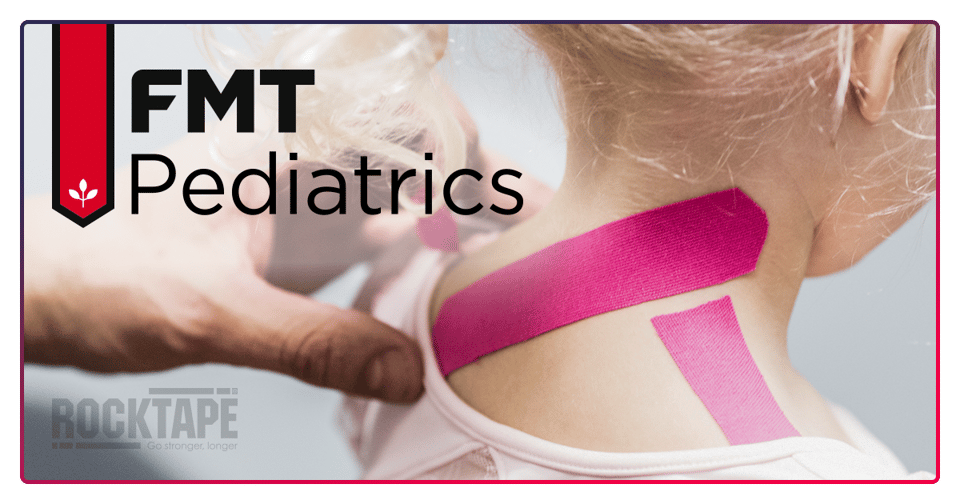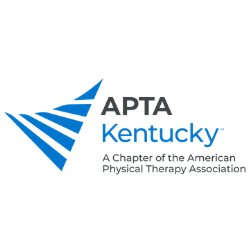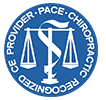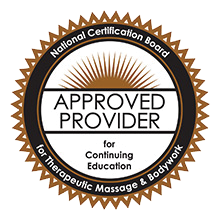FMT Pediatrics - Kinesiology Taping

Description
Until now, choices were limited if you wanted to learn how to use kinesiology tape with special patient populations like the elderly or children.
You don’t have to memorize percentages of stretch or direction of tape in order to get safe, effective results when taping special populations.
FMT Pediatrics introduces the concept of functional kinesiology taping methods with focus on special considerations for the pediatric population. Additionally, this course includes reviews of current literature supporting the theories of kinesiology taping for the purposes of discomfort* control, rehabilitation, edema/swelling management, and a variety of pediatric and adolescent injuries. Assessment and screening techniques will be delivered to enhance students’ knowledge of common pediatric conditions.
Additionally, FMT Pediatrics includes a review of taping techniques for neurologic, orthopedic and postural conditions. Tape strategies for acute and chronic sport-related injury in the pediatric population will be discussed, practiced and evaluated. Conditions like toe walking, poor postural control, torticollis and scoliosis will be introduced and tape strategies for pediatric patients and clients will be covered. Special tape techniques for smaller bodies will also be presented.
Functional Movement Training (FMT) courses are taught by industry leading experts in movement assessment, performance and rehabilitation. CEUs may be offered for DC, ATC, PT, LMTs, LAc, OTs and personal trainers. If your profession & state is unavailable, we do not currently offer CEUs – however, we are continually adding additional licenses.
Note: Tools are not provided with this course.
Available Course Credits
| Alaska State Board of Chiropractic Examiners | 6.00 | ||
| Alaska State PT & OT Board | 6.00 | Expiring on February 9, 2026 | |
 |
APTA Kentucky | 6.00 | Expiring on February 9, 2026 |
| Arizona State Board of Physical Therapy | 6.00 | Expiring on February 9, 2026 | |
| Arkansas State Occupational Therapy Examining Committee | 1.00 | ||
| Chiropractic Physicians’ Board of Nevada | 6.00 | ||
| Colorado Division of Professions and Occupations | 6.00 | ||
| Colorado State Board of Chiropractic Examiners | 6.00 | ||
| Connecticut Department of Public Health | 6.00 | ||
| Connecticut State Board of Chiropractic Examiners | 6.00 | ||
| Delaware Board of Chiropractic | 6.00 | ||
| Delaware Division of Professional Regulation | 6.00 | Expiring on February 9, 2026 | |
| District of Columbia Board of Chiropractic | 6.00 | ||
| District Of Columbia Department of Health | 6.00 | ||
| Georgia State Professional Licensing | 6.00 | Expiring on February 9, 2026 | |
| Hawaii Professional & Vocational Licensing Division | 1.00 | ||
| Idaho Bureau of Occupational Licenses | 1.00 | ||
| Idaho Division of Occupational and Professional Licenses | 6.00 | Expiring on February 9, 2026 | |
| Idaho State Board of Chiropractic Physicians | 6.00 | ||
| Illinois Department of Professional Regulation | 6.00 | ||
| Illinois Medical Licensing Board | 6.00 | ||
| Indiana Board of Chiropractic Examiners | 6.00 | ||
| Indiana Physical Therapy Board | 6.00 | Expiring on February 9, 2026 | |
| Iowa Board of Chiropractic | 6.00 | ||
| Iowa Board of Physical Therapy and Occupational Therapy | 6.00 | ||
| Kansas State Board of Healing Arts | 6.00 | ||
| Kentucky Board of Physical Therapy | 6.00 | Expiring on February 9, 2026 | |
| Maine Board of Chiropractic Licensure | 6.00 | ||
| Maine Board of Occupational Therapy Practice | 1.00 | ||
| Maine Board of Physical Therapy | 6.00 | ||
| Maryland Board of Chiropractic Examiners | 6.00 | ||
| Massachusetts Board of Allied Health Professionals | 6.00 | ||
| Massachusetts Board of Registration | 1.00 | ||
| Massachusetts Board of Registration of Chiropractors | 6.00 | ||
| Michigan Board of Chiropractic | 6.00 | ||
| Michigan Board of Occupational Therapy | 1.00 | ||
| Michigan Board of Physical Therapy | 6.00 | Expiring on February 9, 2026 | |
 |
Minnesota Board of Chiropractic Examiners | 6.00 | |
| Minnesota Board of Physical Therapy | 6.00 | ||
| Missouri Division of Professional Registration | 6.00 | Expiring on February 9, 2026 | |
| Missouri State Board of Chiropractic Examiners | 6.00 | ||
| Montana Board of Chiropractors | 6.00 | ||
| Montana Department of Labor and Industry | 6.00 | Expiring on February 9, 2026 | |
 |
NCBTMB | 6.00 | |
| Nebraska Board of Examiners in Chiropractic | 6.00 | ||
| Nebraska Board of Occupational Therapy Practice | 1.00 | ||
| New Hampshire Board of Chiropractic Examiners | 6.00 | ||
| New Jersey State Board of Chiropractic Examiners | 6.00 | ||
| North Carolina Board of Chiropractic Examiners | 6.00 | ||
| North Carolina Board of Physical Therapy Examiners | 6.00 | Expiring on February 9, 2026 | |
| North Dakota Board of Physical Therapy | 6.00 | Expiring on February 9, 2026 | |
| North Dakota State Board of Chiropractic Examiners | 6.00 | ||
| North Dakota State Board of OT Practice | 1.00 | ||
| Ohio State Chiropractic Board | 6.00 | ||
| Oregon Board of Chiropractic Examiners | 6.00 | ||
| Oregon Board of Physical Therapy | 6.00 | ||
| Pennsylvania Bureau of Professional and Occupational Affairs - Physical Therapy | 6.00 | Expiring on February 9, 2026 | |
| Physical Therapy Governing Board New Hampshire | 6.00 | ||
| Rhode Island Board of Examiners in Chiropractic | 6.00 | ||
| South Carolina Board of Chiropractic Examiners | 6.00 | ||
| South Carolina Board of Occupational Therapy | 1.00 | ||
| South Carolina Board of Physical Therapy | 6.00 | Expiring on February 9, 2026 | |
| South Dakota Board of Chiropractic Examiners | 6.00 | ||
| State of Alabama Board of Physical Therapy | 6.00 | ||
| State of Rhode Island Department of Health | 6.00 | Expiring on February 9, 2026 | |
| Tennessee Board of Physical Therapy | 6.00 | Expiring on February 9, 2026 | |
| Texas Board of Occupation Therapy Examiners | 1.00 | ||
| Texas Physical Therapy Association | 6.00 | Expiring on May 13, 2026 | |
| Utah Chiropractic Physicians Licensing Board | 6.00 | ||
| Utah Physical Therapy Licensing Board | 6.00 | ||
| Vermont Board of Chiropractic | 6.00 | ||
| Virginia Advisory Board On Occupational Therapy | 1.00 | ||
| Virginia Board of Medicine | 6.00 | ||
| Virginia Board of Physical Therapy | 6.00 | Expiring on February 9, 2026 | |
| Washington Chiropractic Quality Assurance Commission | 6.00 | ||
| Washington State Board of Physical Therapy | 6.00 | ||
| Wisconsin Occupational Therapy Affiliated Credentialing Board | 1.00 | ||
| Wyoming Board of Physical Therapy | 6.00 | ||
| Wyoming State Board of Chiropractic Examiners | 6.00 |
Learning Objectives
Define and consider pediatric population needs with respect to posture and injury
Define and discuss concepts of longitudinal myofascial chains as an approach to treatment for a multitude of pediatric conditions
Identify and explain the physiological effects of kinesiology taping
Critically analyze considerations of taping based on current bio psychosocial and movement therapy research
Apply and demonstrate functional taping applications for the pediatric population related to discomfort*, postural, and orthopedic conditions
Discuss and interpret kinesiology taping techniques for neurologic conditions in the pediatric population
Course Procedure
This course is 6 hours in length and a 30 Question multiple choice quiz will be required after completing the course to receive your CEU certificate. A 70% test score is required to pass and receive CEUs. The quiz can be open book and unlimited attempts on the quiz are allowed.
Course Content
| FMT Pediatric Taping | Module |
